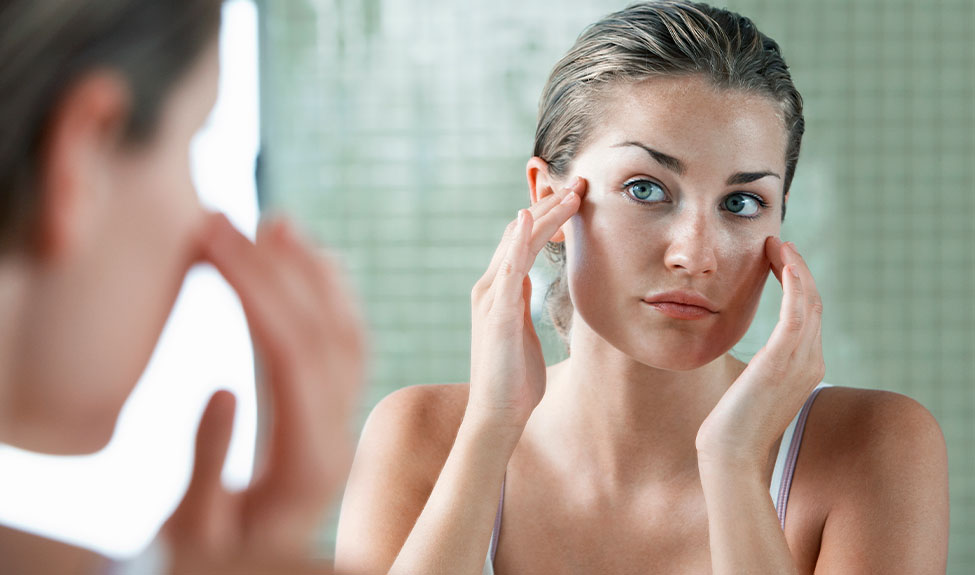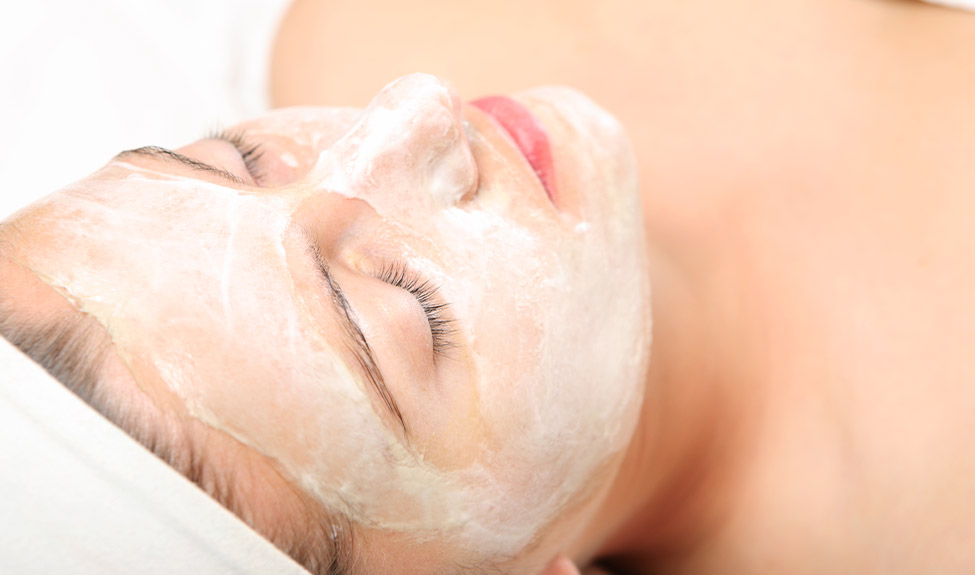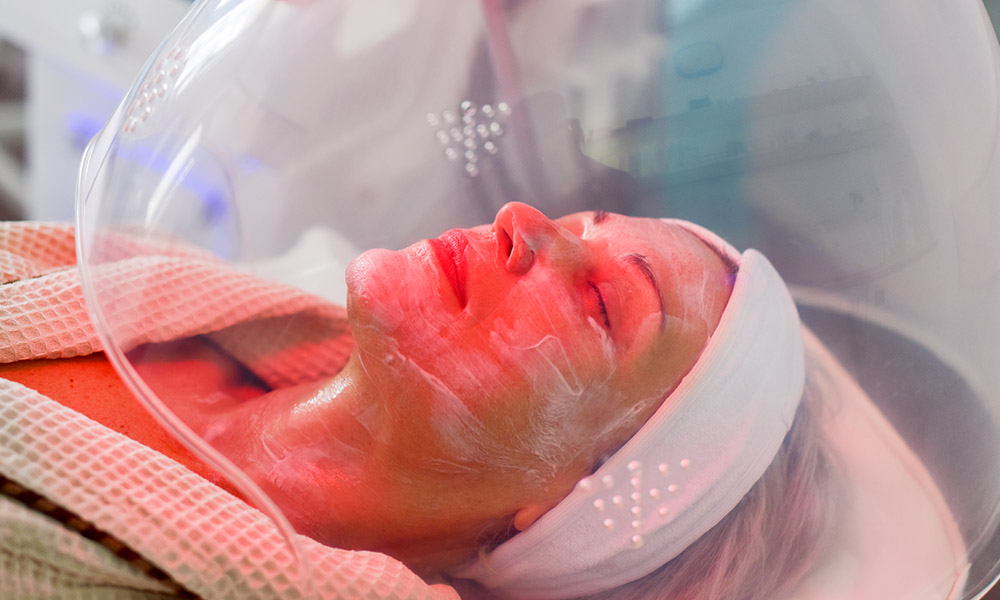Skincare professionals nationwide are seeing a spike in clients coming in with sensitive skin issues. For some, its mild occasional flare-ups but, for others, its chronic breakouts, constant redness, and unbearable dryness.
As a skincare professional, it’s your job to identify and address the client’s skincare needs. A thorough skin analysis helps you determine the skin’s current conditions and asking a few questions can help you get to the heart of your client’s reason for walking into your spa. Using all this information, you can customize the client’s treatment to deliver the desired result without further irritating the skin.
Here’s what you need to know about treating clients with sensitive skin as a spa professional.
Acute vs. Chronic Sensitivity

If your client comes in complaining of sensitive skin, the first step is to confirm that’s what’s actually happening. There is a difference between sensitive skin and sensitized skin. It’s your job to know the difference and how to treat both.
Sensitive skin reacts predictably to triggers like sun exposure, extreme cold, and certain skincare ingredients. Common symptoms of sensitive skin include redness, dryness, frequent breakouts, and proneness to sun damage. If the skin appears very dry and irritated or if it becomes red and inflamed when exposed to certain triggers, it may be a sign of reactive skin instead.
Once you’ve confirmed that your client has sensitive skin, take it a step further to determine whether it’s acute or chronic sensitivity. This is when it’s helpful to ask questions about how often the client experiences symptoms and whether they’ve been able to identify any triggers.
For severe skin sensitivity, encourage the client to speak to their doctor or dermatologist as certain conditions like allodynia (severe dry skin that is painful) could be involved and may require medical treatment.
6 Steps to Include in Every Treatment

Every spa has their own procedures when it comes to intake and treatment, but if you’re working with a client who has sensitive skin, there are some steps you don’t want to skip.
Here are 6 steps to consider including in your treatment:
- Start with a gentle double cleanse. Cleansing should be the first step in any facial, but for clients with sensitive skin you need to be sure to choose gentle products free from potentially irritating ingredients.
- Apply hydrating toner. Toner helps close gaps in the skin to protect it against impurities and irritation – it can also have a calming effect on sensitive skin. Avoid toner that contains alcohol which can strip the skin and impact the health of the microbiome.
- Assess whether exfoliation is needed. Most spa clients can benefit from exfoliation, but if your client’s skin is extremely reactive it may be best to skip it. If you do choose to exfoliate, avoid harsh scrubs containing rough, jagged particles.
- Include an intensely hydrating mask. All skin types can benefit from hydration, but sensitive skin is extra prone to dryness and damage. A hydrating skin mask can help repair damage and restore the skin’s protective barrier.
- Choose targeted treatments to address sensitivity. By now you’ve identified your client’s key concerns and can choose serums and other targeted treatments to address redness, inflammation, and other signs of sensitivity.
- Finish with SPF to protect the skin. Clients with sensitive skin can be particularly prone to sun damage, so make sure to apply SPF for every client during daytime appointments and educate them about the need for applying daily.
In addition to knowing what you should do during a facial for sensitive skin, there are also things to avoid. Always use products free from irritating or overly drying ingredients. Avoid steam and aggressive exfoliation. You may even ask the client if they’re willing to come in ahead of time for a patch test.
Even after the treatment is completed, your work isn’t finished. A professional spa facial can help calm a flare-up and address other skin concerns related to sensitivity, but at-home maintenance is essential for long-lasting relief. Education is key, so make sure to tell your client what kind of products you used during the treatment and what you recommend they use at home.
Are Intensive Treatments Safe for Sensitive Skin?

All skin types can benefit from cleansing, exfoliation, and hydration but what about more intense treatments? Chemical peels help improve the tone and texture of the skin, delivering anti-aging benefits and reduction in the appearance of acne scars. Microdermabrasion rejuvenates the skin to address discoloration and provides anti-aging benefits a well. Are these treatments safe for sensitive skin?
While more intensive skincare treatments can certainly yield some astounding results, they generally aren’t the best choice for clients with sensitive skin. If your client is in the middle of an active flare-up, the last thing you want to do is irritate the skin any further. Fortunately, there are alternatives.
Here are some treatments that may help sensitive skin clients achieve the benefits of more intensive treatments:
- Lactic Acid Peel – A type of chemical exfoliant, lactic acid is often gentle enough for sensitive skin. This ingredient helps exfoliate away dead skin cells, reducing pigmentation and the appearance of fine lines and wrinkles.
- Clay Mask – A clay mask helps reduce skin irritation and can also combat issues like oiliness as well as irritation, inflammation, and redness. Different types of clay provide different benefits.
- Polyhydroxy Acid (PHA) – Often considered a second generation of alpha hydroxy acids (AHAs), polyhydroxy acids are a gentle chemical exfoliant. You can find them in cleansers, peels, and masks to exfoliate dead skin cells and reveal smoother, more even skin tone.
- Intense Pulsed Light (IPL) Therapy – Also known as photofacial, intense pulsed light (IPL) therapy involves using targeted wavelengths of light to treat the skin. This treatment can reduce the appearance of sun damage, hyperpigmentation, and uneven skin tone.
Whether chronic or acute, skin sensitivity is an incredibly common concern affecting as many as 60% of spa clients. As a spa professional, you’ll find yourself dealing with this issue on a regular basis so it’s important to cultivate an understanding of what causes sensitive skin and how it manifests. Once you understand the issue, you have a better chance of treating it effectively and helping your clients learn how to manage it at home.

